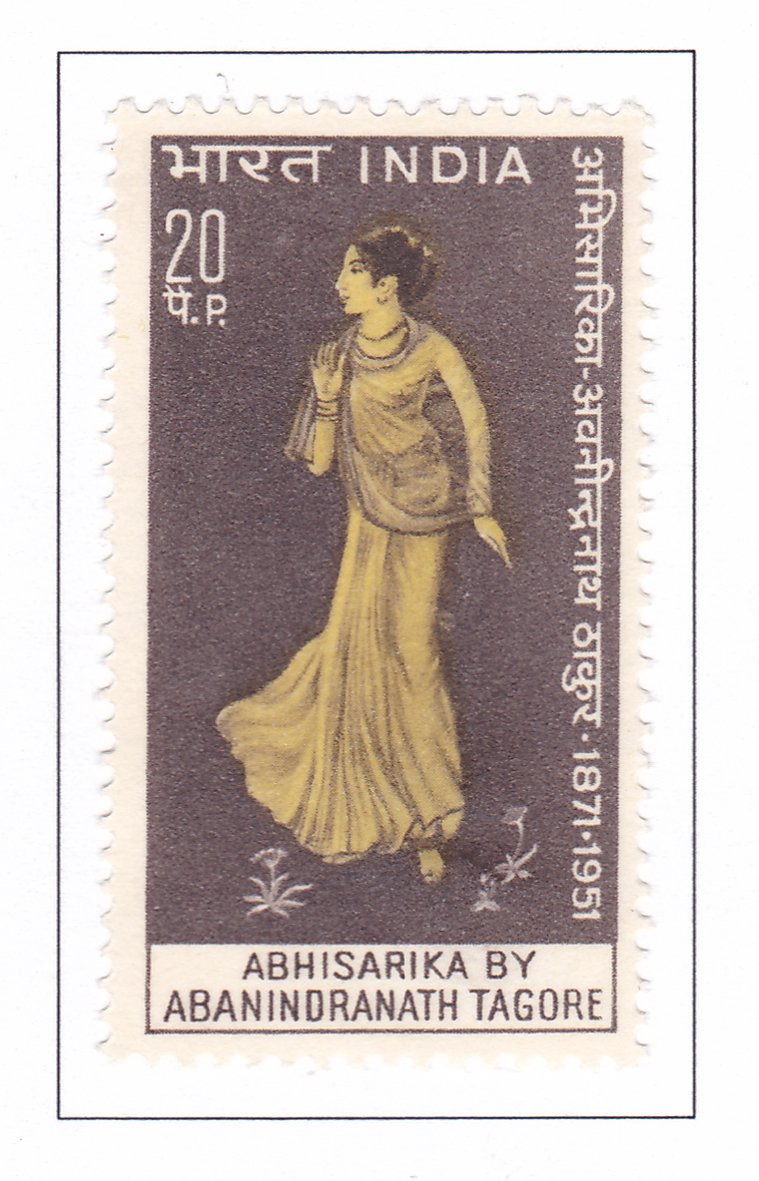Abanindranath Tagore Birth Centenary

Technical Data
| Stamp Set | Birth Centenary |
|---|---|
| Date of Issue | August 7, 1971 |
| Denomination | 20 nP |
| Quantity | 3,000,000 |
| Perforation | comb 14 x 15 |
| Printer | Security Printing Press, Nashik |
| Watermark | No Watermark |
| Colors | Brown | Grey | Yellow |
| Catalog Codes |
Michel IN 526 Stamp Number IN 542 Yvert et Tellier IN 325 Stanley Gibbons IN 640 |
| Themes | Anniversaries and Jubilees | Painters | Paintings |
Abanindranath Tagore, born on August 7, 1871, at Jorasanko, the Tagore residence in Calcutta, hailed from a family where creative pursuits were encouraged. His formative years were spent at Chamdani, where he began to explore drawing and painting. Following his father’s demise, the family returned to Calcutta, where Abanindranath studied at Sanskrit College and developed a deep appreciation for Indian classics.
His artistic journey commenced under the guidance of European teachers at the Calcutta Art School, initially following the conventions of 19th-century European art. However, Abanindranath soon discovered a connection between indigenous Indian art and foreign influences, leading him to create a series of Radha-Krishna paintings in the Indian style.
E.B. Havell, an influential figure, recognized Abanindranath’s talent and appointed him as the Vice-Principal of the Calcutta School of Arts. Through Havell and Okakura, a renowned Japanese connoisseur, Abanindranath gained insights into Chinese and Japanese art and culture.
Despite being a reluctant traveler, Abanindranath’s journeys to various places, including Monghyr, Puri, Konark, and Darjeeling, influenced his artistic vision significantly. Some of his notable works include “Uma” (c.1921), “Bharat Mata” (1902), and the “Omar Khayyam Series” (1930).
In his later years, Abanindranath ventured into creating small toys and sculptures from found objects. His influence extended to artists like Nand Lal Bose and Kshitindranath Majumdar, highlighting his unique position in modern art, akin to Rabindranath Tagore’s stature in literature.
Abanindranath’s written works, such as “Shadanga” (Six Limbs of Painting) and “Bharat Silpa,” also contributed to his legacy. He passed away in 1951, leaving behind a profound impact on Indian art.
The Posts and Telegraphs Department honors Abanindranath Tagore’s birth centenary by issuing a commemorative stamp featuring one of his creations, titled “Abhisarika.” This painting, inspired by a verse from Kalidasa’s “Ritu Samhara,” reflects Abanindranath’s attempt to depict Indian themes in a style blending Indian and Western influences. The artwork portrays a woman in a sari, displaying sensual beauty through her elegant pose and subtle gestures, capturing a sense of gentle movement and restlessness.
